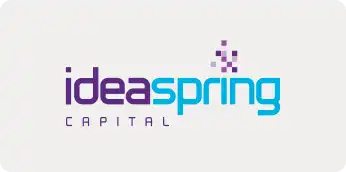About the BookCrunch Series:
Books are great for growth. But you won’t always find time to sift through recommendation lists, pick out the gems, and then read them cover to cover.
That’s why we’ve started with BookCrunch. We’re going to summarize the best books for SaaS founders and bring you key takeaways that go beyond simple descriptions of what the book is about. It’s curated and summarized by us for YOU. We hope this series helps you discover new ways of thinking and learn from experts.
“Your idea may be unique, but how you make money isn’t unique. If basic back-of-the-napkin math doesn’t work, a complex spreadsheet won’t.”
Startups fail for all kinds of reasons, but these failures can teach you bigger lessons especially when they’re caught early on. Here’s a book that takes you through the granular details – from fleshing out an idea to finding product market fit.
About the author
Dave Parker is a 5x founder. He’s previously served as Senior VP at UP Global [the parent company of Startup Weekend, which now thrives as part of Techstars]. He’s been instrumental in shaping the early-stage landscape for entrepreneurial support globally with a #GiveFirst ethos.
His book ‘Trajectory: Startup’ fills the gap between post-inspiration and pre-acceleration. Dave’s ideas chart out the course from ideation to launch and revenue.
This book is for you if you,
✅ Have an idea and aren’t sure if it’s the next big thing (or not worth pursuing)
✅ Are navigating the early-stage startup challenges
✅ Are an organizational leader of accelerators that support startups
✅ Are an early-stage investor and aren’t sure which business models produce the best returns or how to guide startups
Key ideas in the book:
- Customer development (understanding what your customers need & want at all points of starting/scaling).
- Developing a meaningful plan for your start-up to generate revenue.
- Tackling challenges with getting investors, mentors, and critical hires who are interested in what you’re building.
- How to ship a product and make your first buck.
1. Importance of strong ideation
The ‘why – It’s important to have a rough draft of your vision, mission, and values early on to ensure alignment with your founding team and guide your business forward.
- Vision: Describe what your company wants to be in the future.
- Mission – Guide your daily activities and what your company does now
- Values – Outline your core beliefs as a founder. This will define the culture you want to set.
- Goals – Detail what you need to accomplish to implement your strategy.
- Objectives – Outline specific actions with timelines
Most businesses explain what they do, but lack the ‘why and how’. Simon Sinek’s Book “Start with Why” [Seattle TEDx talk – How great leaders inspire action]. Watch the video below.
2. Validating your ideas
You’re going to spend a lot of time on your idea – building the product/service and eventually growing your company, so it’s important to make sure the idea is worth it.
Framework to validate your idea before you make the big jump:
- Can you make money with the idea? (be absolutely clear that your ideas are not a solution looking for a problem)
- Is the idea fundable? (Regardless of whether you choose to raise funding or not, you need to understand what makes a fundable company and cultivate the mindset of an investor yourself)
- Will you continue to be passionate about this idea? Or will you be bored in a year or two?
Goals:
STRETCH GOALS – overly ambitious goals that purposefully challenge you/the team.
SMART GOALS – Specific (well-defined & clear) – Measurable (what ‘achieved/complete’ means) – Agreed upon (individual goals lead to team accomplishment) – Realistic (can be accomplished with given time + resources) – Time (reasonable timelines broken down into quarters).
Having 2 sets of goals will keep you focused as well as aligned with your vision of where you want to go with your product/company.
As you refine your goals + vision – you will identify skills you may need to improve on.
Identifying and evaluating business ideas:
- Frameworks are useful ways to think of ideas. These can be different contexts to view your idea. Eg. Market trends, Problems/solutions.
- Validate ideas by building MVPs that you can put in front of customers
- Identify problems + solutions, but also identify where the cash is and who will pay.
- Pain pills v/s Vitamins: Customers are willing to pay anything for a pain pill (eg. Stripe) because they need it. Vitamins are nice to have only if they’re convenient or reasonably priced.
2. Factors for Startup Success:
Two most common reasons why startups fail – 1. No market (Failed to build a product that people would use or pay for), or 2. Ran out of cash (time & money to build and launch are unknown or underestimated).
The lesson here on how to avoid this happening to you – Customer development interviews! Get out there and talk to real potential customers asking if they want the product you’re thinking of building. This will also save you from burning money by building the wrong product.
What makes startups succeed?
Factors that determine the success of startups
- Timing
- Team & Execution
- Idea outlier
- Business model
- Good & bad markets
- Funding
3. Customer-Centric Approach
Creating customer development questions & a process to capture data.
- Knowledge of your customers is a competitive advantage. You can’t outsource this.
- Ask the 5 whys [Be sure that your follow-up questions are not repetitive, but have the intent to dig deeper]
Asking the right questions
- High level to specific
- Always note contact info for future feedback
- Include questions that can be asked throughout the product development lifecycle (Questions that can help you improve a live product)
- Follow-up questions with why or why not
Ask questions with specific intent:
- Customer segmentation – so you can understand your existing customers, potential customers & their shared characteristics.
- Problem discovery – so you can validate your hypothesis about a problem or learn about problems your customer faces.
- Problem validation – so you can validate if the customer has the problem you think they have.
- Product discovery – intentionally ask open-ended questions so you can get more honest answers and possibly more ideas.
- Product validation – to validate/invalidate your idea
- Product Optimization – to improve your idea or product
Know when to pivot with the idea – make sure you are positioned where your customer’s pain levels are high & they’re willing to pay.
4. 14 possible revenue models to explore:
Parker suggests picking a primary and a secondary business/revenue model. Having more than one revenue model correlates highly with long-term success.
1. Services/Fee for Services
– Easiest model to start but difficult to scale.
2. Commerce
– Serves B2B + B2C. Eg. Amazon
3. Subscription
– B2B, consumer subscription of virtual goods, or hosted SaaS with a forecastable revenue. Eg. Salesforce.
4. Metered Services
– Aligns with customers’ objective (pay for what you use) Eg. AWS.
5. Transaction Fee/ Affiliate/ Rentals
– Fee as a percentage of transaction. Margins tend to be small. Eg, Stripe
6. Productize a service
– As the name suggests, a service is turned into a product. Eg. Moz
7. Combinations
– A blend of primary + second models. Can work if you’re still figuring out the ideal model or are in the process of scaling.
8. Marketplace
– No ownership or possession of products sold. Eg, eBay.
9. Lead Generation
– Generate traffic or leads and conversions from there. Based on the value of each lead.
10. Gaming
– Gamified models/entertainment based. Eg. Candy Crush. Based on downloads, in-app purchases, and monthly transactions.
11. Advertising/ Search
– Advertisers pay. Eg. Google, or platforms like Instagram/Facebook
12. New Media
– Based on virality or K-factor (viral coefficient ). Eg. WhatsApp, Snapchat.
13. Big Data
– Companies that monetize data. Eg. PatientsLikeMe, or more familiar Practo.
14. Licensing
– Purchase a license to use the software. Microsoft Office/Adobe
Parker notes, “SaaS is not a revenue model but a delivery mechanism”

























